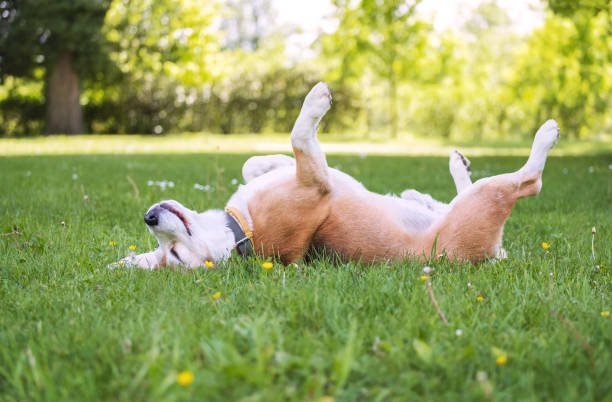To keep your dog from injury while playing, make sure to provide a safe environment with no sharp objects or hazards, provide toys that are appropriate for your dog's size and age, and supervise your dog while playing.
Dogs can injure themselves while playing by spraining or straining muscles, dislocating joints, or tearing ligaments. They can also suffer cuts, scrapes, and bruises. can injure themselves while playing by spraining or straining muscles, dislocating joints, or tearing ligaments. They can also suffer cuts, scrapes, and bruises.
scrape
The soft surface of artificial turf helps prevent scratches and abrasions when playing time gets too rough. You can also use the best artificial turf for dogs to cover things and areas that could hurt your dog.
torn or broken nails
Dog nail injuries are common, especially if they are noisy and prone to getting close. They are at a higher risk of breaking nails in yards with hardscape, such as concrete, asphalt, and wood. These materials are hard and unforgiving and can seriously damage paw pads and nails.
The artificial grass leaves are soft, so they won't do much damage to your pet's feet and nails. Pet lawns also don't get muddy and slippery like natural grass. If your pet slips while playing in the yard, it won't tear their paws even if they don't have them!
skin infection
Grass seeds and burrs can stick to dogs' paws, burrowing under their skin and causing infections. Grass seeds are sharp and can easily become lodged in a pet's foot or between the toes. They can become infected, which can be painful and may even require surgery.
Burrs are dense balls of plant material that can stick to your pet's fur. They can pull on your pet's fur and skin, causing discomfort and, in some cases, possible infection.
Artificial grass is free of grass seeds and burrs. So your pets are safe from these types of injuries.
How the Best Dog Lawns Can Keep Your Pets From Getting Sick
In addition to injuries, dog owners love artificial grass because it keeps their pets safe from these health conditions:

Tick infestation
Ticks are a serious health threat to pets, and they can carry harmful diseases, including Lyme disease and Rocky Mountain spotted fever, both of which can be fatal. These parasites feed on blood and attach to their hosts by entering the skin. Dogs infested with ticks often experience lethargy, weight loss, low blood pressure, and poor coordination.
Ticks thrive in moist, weedy environments, such as natural lawns. Unlike traditional grass, synthetic grass never retains enough moisture to attract ticks. It only needs water to clean up occasionally, and it's still short enough not to give ticks any hiding place.
flea infestation
Natural grass is also a breeding ground for fleas. These parasites can carry tapeworms and are difficult to eradicate once they take hold. They can be uncomfortable or painful for your dog. Despite this, fleas are carriers of serious diseases that can infect humans. Dogs can pick up fleas from other animals or wallow in natural grass with flea eggs and larvae.
Artificial grass for dogs is not flea-infested because the parasite cannot reproduce on its surface. It also won't attract flea-carrying pests like mice and raccoons.
heatstroke
Heat stroke is a life-threatening condition that can happen to dogs, especially those with long or thick coats. High heat and humidity can cause dogs to overheat, leading to respiratory problems, kidney failure, heart attack and death.
Natural grass and hardscape absorb and radiate heat. In hot weather, they can raise the temperature of your yard to dangerous heights, which is not dangerous with synthetic grasses. The best artificial turf for dogs doesn't retain heat, and you can always flush it with water to cool it down. Don't worry about puddles forming on your lawn. Artificial grass has drainage holes that effectively remove moisture, pet urine, and other moisture.
chemical poisoning
Insecticides and herbicides help keep natural lawns healthy. However, these chemicals can be dangerous for your dog. They leave toxic fumes and residue on your lawn. If dogs inhale or swallow them, they can experience various health problems such as vomiting, nausea, seizures and even coma.
With artificial grass, you don't need to use herbicides, pesticides, and other chemicals on your lawn. It looks great year round and requires very little maintenance, so your dog is never at risk of exposure.
allergic reaction
Some dogs are prone to allergic reactions. Pollen from grasses, weeds, and other plants can trigger symptoms such as excessive paw licking or itchy skin, sneezing, vomiting, and diarrhea.
Artificial grass does not produce pollen and will not trigger allergic reactions in your dog.


Share:
How to cool artificial turf in summer?
Will artificial grass fade in the sun?